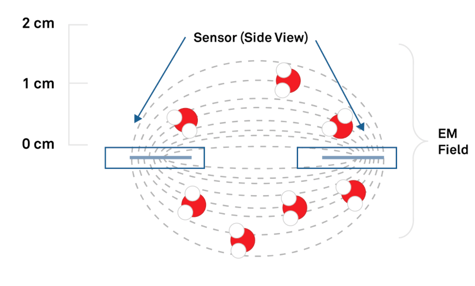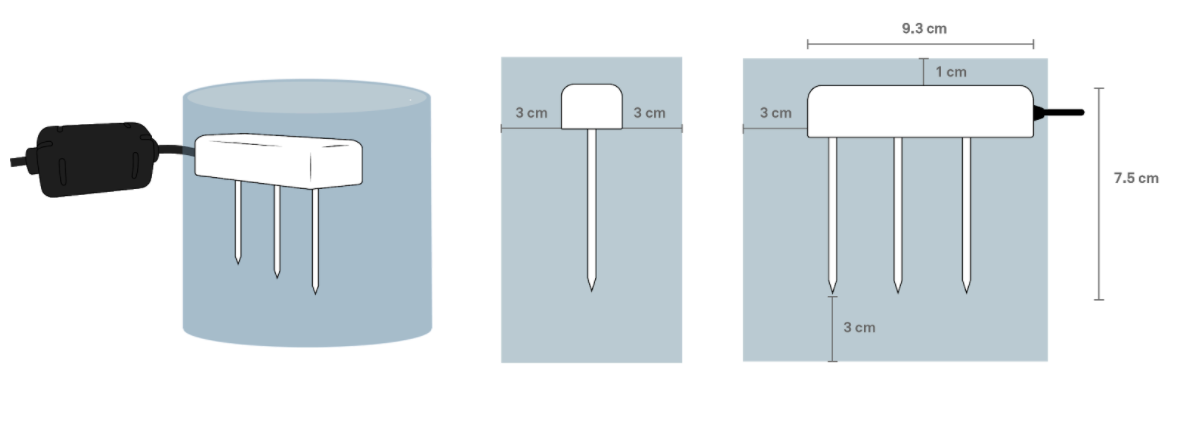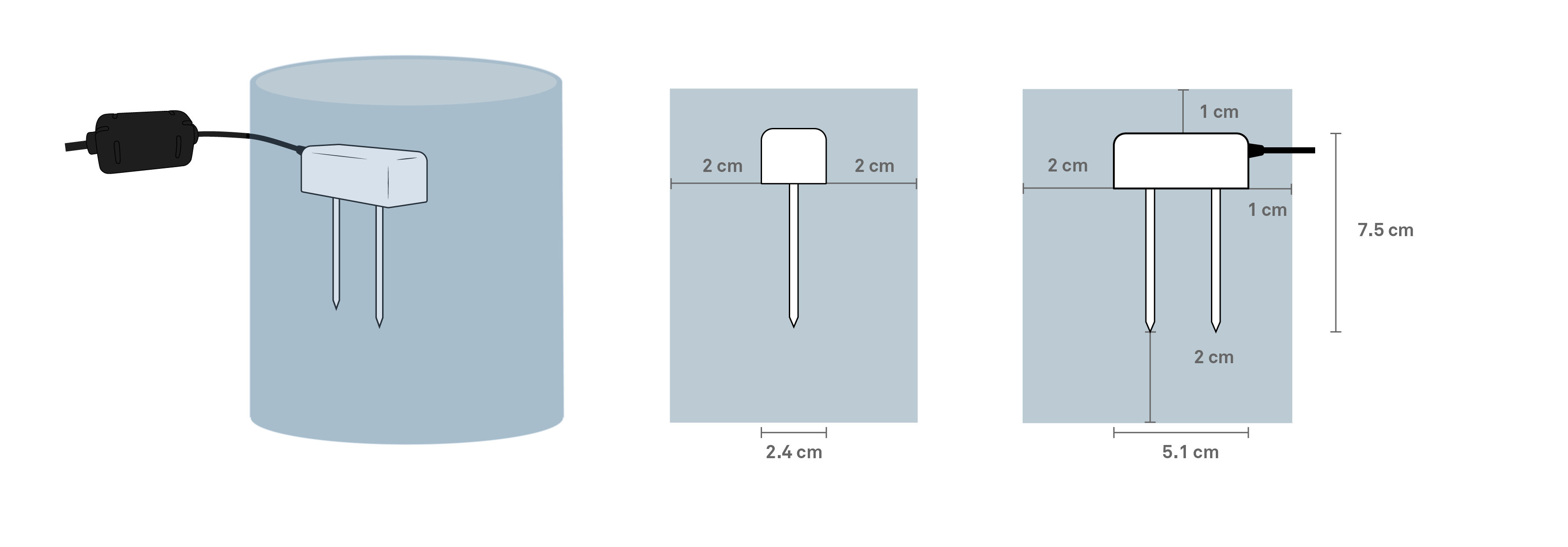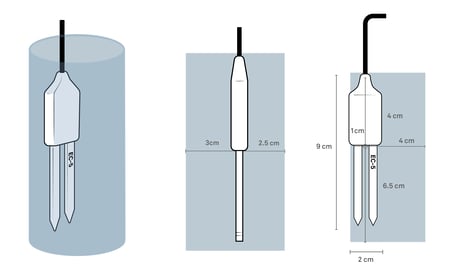How to use the Substrate Moisture sensors?
30MHz connected the moisture sensors from Metergroup. The sensors are used to measure the state of the substrate. We will explain how to use the substrate moisture sensor in this article.
In this article:
Which parameters are measured?
Volumetric Water Content
Electrical conductivity
How does the sensor measure?
Volume of influence
Which parameters are measured?
We have connected multiple sensors from Metergroup. See the list below of which parameters are measured per type of sensor.
| Sensor | Volumetric Water Content | Electrical Conductivity | Temperature |
| Substrate Moisture sensor (Teros12) | x | x | x |
| Arable Moisture sensor (Teros10) | x | x | |
| Potted Moisture sensor (EC5) | x |
Volumetric Water Content
Volumetric Water Content (VWC) is the volume of water divided by the volume of soil. So, the VWC is the percentage of water in a soil sample. For instance, if a volume of soil was made up of the following constituents: 50% soil minerals, 35% water, and 15% air, that soil would have a 35% volumetric water content. For more information see our article about VWC.
Electrical conductivity
In the platform, you will see two electrical conductivity parameters, ECb and ECw. The Substrate moisture sensor measures the ECb (Bulk EC) as a raw value. ECb is the bulk soil (soil, water, and air). ECw (Pore EC) is the electrical conductivity of the water in the soil pores. The agriculture industry standard, or what is usually meant by EC, is pore water EC, which we abbreviate in the platform to ECw (water). See this article to learn more about EC calculations.
Please note that calibration and VWC figures will impact the ECw output value. See this article to choose the calibration that works best for your substrate.
If the VWC is below 25% then the ECw reading is not accurate, so we have chosen not to display this figure on your charts. So if you find breaks in your ECw charts, this is because of the low VWC reading. You will be notified in the platform by an error icon in the sensors list when the VWC is below 25%. Read this article to learn more.

How does the sensor measure?
The Substrate Moisture sensors have probes/metal needles that form an electromagnetic field (see image below). These probes are metal electrodes and measure the charge-storing capacity of the material in between the probes. This is called capacitance technology. Metergroup is specialized in this way of measuring. They have gathered a lot of interesting information about this technology. Click here to learn more from Metergroup.

Capacitance technology visualized: Sensors use two probes (positive and negative) to form an electromagnetic field. The image is from Metergroup.
Volume of influence
Every sensor has an area of the substrate where it measures its electromagnetic field. This is the volume of influence. Anything within this electromagnetic field affects the output of the sensor. The sensitivity within this electromagnetic field is not uniform, for instance, the sensor is the most sensitive a few millimetres from the probe's needles. This has the largest influence on the measurement. Below you will find the volume of influence for every moisture sensor from Metergroup that we have connected to the 30MHz hardware.
Teros12

Teros10

Ec5

Questions about the Substrate Moisture sensors? Please get in touch with us!